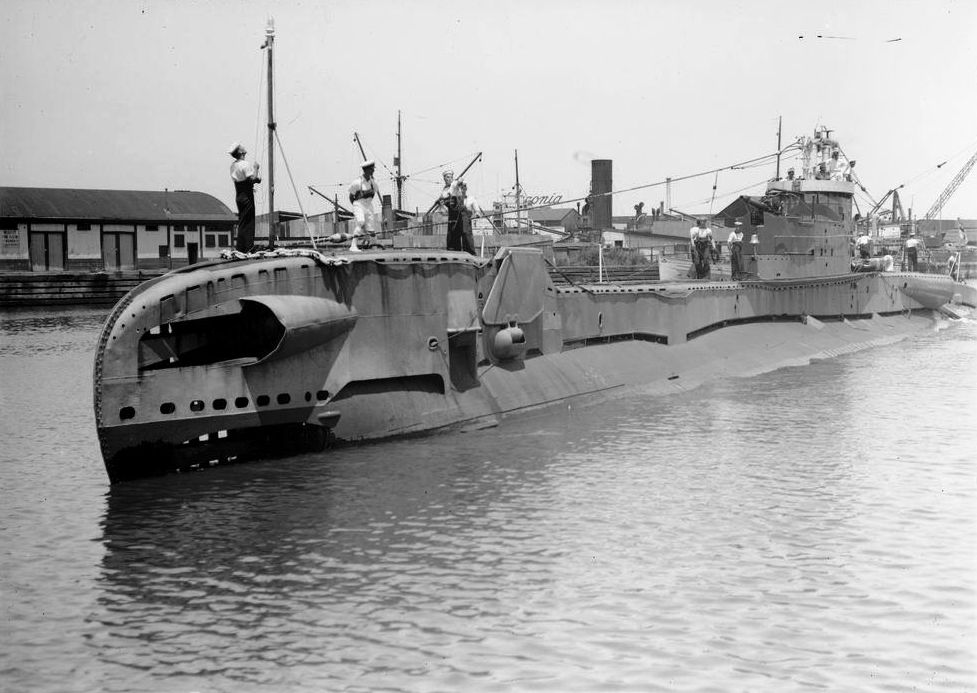4th Submarine Squadron (United Kingdom) on:
[Wikipedia]
[Google]
[Amazon]
The 4th Submarine Squadron was a unit of the Royal Navy operating conventional submarines. It was established at HMAS ''Penguin'', Sydney, Australia, in 1949 partly to provide anti-submarine warfare training to
 During the
During the
Royal Australian Navy
The Royal Australian Navy (RAN) is the principal naval force of the Australian Defence Force (ADF). The professional head of the RAN is Chief of Navy (CN) Vice Admiral Mark Hammond AM, RAN. CN is also jointly responsible to the Minister of ...
(RAN) and Royal New Zealand Navy
The Royal New Zealand Navy (RNZN; mi, Te Taua Moana o Aotearoa, , Sea Warriors of New Zealand) is the maritime arm of the New Zealand Defence Force. The fleet currently consists of nine ships. The Navy had its origins in the Naval Defence Act ...
personnel. The Royal Navy transitioned to nuclear-powered submarines from 1960 and notified the Australians that the 4th Submarine Squadron would be disbanded. The RAN decided to procure its own submarines to replace the squadron in the training role and purchased four ''Oberon''-class vessels in 1963. To prepare the RAN to maintain these vessels the Royal Navy agreed to refit five T-class submarines, including at least three from the 4th Submarine Squadron, at Cockatoo Island Dockyard
The Cockatoo Island Dockyard was a major dockyard in Sydney, Australia, based on Cockatoo Island. The dockyard was established in 1857 to maintain Royal Navy warships. It later built and repaired military and battle ships, and played a key role ...
in Sydney. The 1st Australian Submarine Squadron was operational by 1969, upon which the Royal Navy disbanded the 4th Submarine Squadron.
Early history
 During the
During the Second World War
World War II or the Second World War, often abbreviated as WWII or WW2, was a world war that lasted from 1939 to 1945. It involved the vast majority of the world's countries—including all of the great powers—forming two opposi ...
an earlier incarnation of the 4th Submarine Squadron operated out of Trincomalee
Trincomalee (; ta, திருகோணமலை, translit=Tirukōṇamalai; si, ත්රිකුණාමළය, translit= Trikuṇāmaḷaya), also known as Gokanna and Gokarna, is the administrative headquarters of the Trincomalee Dis ...
in the British colony of Ceylon. Its duties included landing special forces in Sumatra during the Japanese occupation of the Dutch East Indies
The Empire of Japan occupied the Dutch East Indies (now Indonesia) during World War II from March 1942 until after the end of the war in September 1945. It was one of the most crucial and important periods in modern Indonesian history.
In May ...
.
In 1949 the 4th Submarine Squadron was established at Sydney, Australia. The submarines were based at HMAS ''Penguin'' though they also regularly docked at the Royal Australian Navy
The Royal Australian Navy (RAN) is the principal naval force of the Australian Defence Force (ADF). The professional head of the RAN is Chief of Navy (CN) Vice Admiral Mark Hammond AM, RAN. CN is also jointly responsible to the Minister of ...
's (RAN) Cockatoo Island Dockyard
The Cockatoo Island Dockyard was a major dockyard in Sydney, Australia, based on Cockatoo Island. The dockyard was established in 1857 to maintain Royal Navy warships. It later built and repaired military and battle ships, and played a key role ...
. The squadron operated conventional (diesel-electric) submarines. Its role was partly to assist with the training of Commonwealth navies in anti-submarine warfare. In this role the squadron also regularly visited New Zealand
New Zealand ( mi, Aotearoa ) is an island country in the southwestern Pacific Ocean. It consists of two main landmasses—the North Island () and the South Island ()—and over 700 smaller islands. It is the sixth-largest island count ...
to train the Royal New Zealand Navy
The Royal New Zealand Navy (RNZN; mi, Te Taua Moana o Aotearoa, , Sea Warriors of New Zealand) is the maritime arm of the New Zealand Defence Force. The fleet currently consists of nine ships. The Navy had its origins in the Naval Defence Act ...
, as well as training in Australian waters and near Fiji.
Transition to Australian-operated submarines
As the Royal Navy transitioned to nuclear submarines from 1960 it sought to pass the anti-submarine warfare training role to the Commonwealth navies. It informed the Australian navy of its intention to disband the 4th Submarine Squadron and the RAN agreed to procure its own conventional submarines (they ordered four ''Oberon''-class submarines in 1963). To help prepare the RAN for operating its own submarines the Royal Navy agreed to refit submarines at Cockatoo Island Dockyard. From 1960 British T-class submarines were refitted there, at the expense of the Australian Department of the Navy. The first vessel was HMS ''Tabard'', which was in the dock from November 1960 to March 1962. This was followed by HMS ''Trump'', HMS ''Taciturn'' and two other T-class vessels. The 4th Submarine Squadron was disbanded on 10 January 1969, being replaced by the 1st Australian Submarine Squadron, initially comprising HMAS ''Oxley'' and HMAS ''Otway''. The Royal Navy left its facilities at ''Penguin'', which was taken over by the Royal Australian Navy's diving unit.Boats operated
Seven T-class submarines and three ''Amphion''-class submarines were operated by the 4th Submarine Squadron at some point. The first three boats were HMS ''Telemachus'', HMS ''Thorough'' and HMS ''Tactician''. These were replaced by HMS ''Aurochs'', HMS ''Andrew'' and HMS ''Anchorite'' in 1957. These, in turn, were replaced by HMS ''Tabard'', HMS ''Taciturn'', HMS ''Trump'' and HMS ''Tapir'' in 1960. ''Trump'' was the last vessel of the squadron to leave Australia for Britain.References
{{reflist Submarine squadrons of the Royal Navy Military units and formations established in 1949 Military units and formations disestablished in 1969